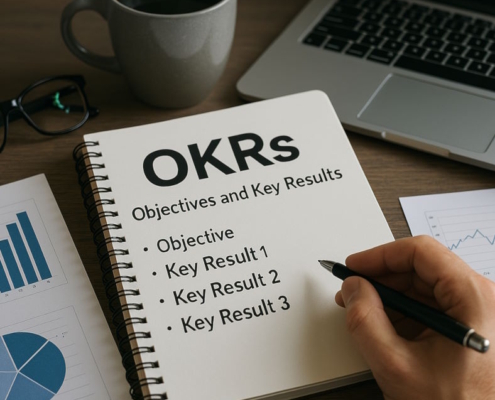How does partnership differ from other forms of business?
The main difference between a corporation and a partnership is the separation between the business and the owners. A corporation is separate and distinct from the owners, while the owners share the business benefits and risks in a partnership.
Similar to a sole proprietorship, a partnership is financially and legally bound to its owners. This means that profits and losses are passed through to the owners’ personal income when tax season comes around. Also, liabilities and debts pass through to the partners as well.
In general, partnerships are easier and cheaper to create than corporations.
Every kind of partnership offers the benefit of pass-through taxation, which means that there are lower taxes than other business entities such as corporations.
What is the most common type of partnership?
General partnerships are the most common type of business partnership. Among the most common types of partnerships are general partnerships (GP), limited partnerships (LP), and limited liability partnerships (LLP).
A general partnership is where two or more partners agree to share a company’s assets, losses, liabilities, and profits. The partners own the partnership. Each general partner has unlimited personal liability for the debts and obligations of the business. A general partnership is an unincorporated business with two or more owners who share business responsibilities.
As the most basic kind of partnership, a general partnership does not require the partners to form an official business entity with the state. Most times, the partners form the company by signing a partnership agreement. Ownership and profits are typically divided evenly among the partners, but this division may be decided otherwise in the partnership agreement.
This kind of partnership gives partners a lot of power, but it also means a lot of responsibility. For instance, let’s consider a partnership that has three partners. One of the partners decides to take out a loan that the business cannot repay, meaning that the whole partnership is now liable for that debt.
General partnerships are also easy to create and dissolve. When a partner dies or goes bankrupt, the partnership will usually dissolve automatically.
A limited partnership is a specialized form of general partnership. A limited partnership is when two or more partners go into business together, with the limited partners only liable up to the amount of their investment. Limited partners (“LPs”) commit capital to a venture fund. A limited partner invests money in exchange for shares in a partnership but has restricted voting power on company business and no day-to-day involvement in the business. The Limited partners are usually investors who have no particular expertise in the business operations.
Limited partnerships, or LPs, are formal business entities that are authorized by the state. They will have one general partner who take full responsibility for the business, in addition to one or more limited partners who make monetary contributions. These limited partners, however, do not manage the business.
Limited partners choose to invest in the business to make money down the road, but they are not responsible for the company’s liabilities and debts. This is known as silent partner limited liability. This means that the limited partners can take a share in the profits of the business, but they cannot lose more than they have invested. Depending on the state, limited partners may not be eligible for pass-through taxation.
If the limited partners begin to play an active role in managing the business, then they may lose their designation as a limited partner, in addition to the protections that come with the status.
Some limited partnerships decide to make a limited liability company the general partner so that no one has to suffer unlimited personal liability. It is important to note that this option is not available in most states, and it can also be much more complex than a typical limited partnership.
- Limited Liability Partnership
Limited liability partnership (LLP) is a type of general partnership where every partner has a limited personal liability for the debts of the partnership. An LLP is a limited liability partnership where each partner has limited personal liability for debts or claims of the partnership. Partners of an LLP aren’t held responsible for the acts of other partners. Limited liability partnership (LLPs) is a legal entity that allows partners to benefit from economies of scale by working together while also reducing their liability for the actions of other partners.
A limited liability partnership, or LLP, works similarly to a general partnership in the sense that all partners play a role in managing the business. However, this entity type limits their liability for one another’s actions.
The partners will still be liable for the business’ debts and liabilities, but they are not responsible for the mistakes of the other partners.
LLPs are only available in certain states and are generally limited to specific professions. These professions include doctors, accountants, and lawyers.
How to Form a Partnership
You don’t have to file any paperwork to form a partnership. Two or more persons can form a partnership by simply agreeing to go into business together. This type of partnership is called a general partnership. However, if you want to limited your liablity for debts, then you want to form a LP or LLP.
An individual who is interested in forming a partnership such as LP or LLP should follow these steps:
1. Choose a Partnership Structure
The first step in forming a business partnership involves selecting the best structure for one’s situation. An entrepreneur should research the permitted partnership types in their state. They may do so by checking their secretary of state’s website to figure out which kinds of partnerships are available and which are allowed for the specific type of business.
This is also the time to discuss the business vision and goals of the company. The entrepreneur should ask him or herself what they want out of the business: a steady income, a tax shelter, or the opportunity to pursue one’s passion? Are there friends or family members who may want to play a role in the business? How will accounting be handled?
Depending on the answers to the above questions, an entrepreneur should pick the appropriate partnership structure. This would also be the right time to consult with an attorney and tax advisor.
2. Draft a Partnership Agreement
Though some partnerships have been founded with a handshake, most are formed using an official partnership agreement. Like a corporation’s articles of incorporation, a partnership agreement determines how the business will be run, how profits and losses will be divided between partners, and how the company will navigate changes, such as the exit or death of a partner.
The partnership agreement should be signed by every involved party. It should also cover the following questions:
- Who are the partners?
- How is ownership divided among partners?
- Who manages the business? Does one partner have more responsibility than the others?
- Are there limited partners? What do they contribute?
- How are disputes resolved? Does one partner have the final say? What happens if there is a conflict that cannot be resolved?
- How are profits and losses shared?
- Will family be involved in the partnership? Will they have any special powers or benefits?
3. Name the Business
If an entrepreneur is creating a limited partnership, a limited liability partnership, or a limited liability limited partnership, then he or she must register the company with the state. To do so, they must follow these steps:
- Select a Home State: If the business is spread out over many states, then one should choose a state of formation. In general, the best state for this purpose is the one where the majority of business is conducted.
- Review Licensing Requirements: One should figure out what licenses are needed to conduct business in the specific state.
- Apply: One should complete the certificate of partnership for the relevant structure and file it with the secretary of state. This application will usually include the names of the partners, their positions, the purpose of the company, and the expiration date of the partnership.
- Appoint a Registered Agent: One should name an individual who has a physical location during business hours. This way, they can accept notices of lawsuits and other business documents for the partnership. There are also professional services that can act as a registered agent.
- Submit the Application: It is important to submit the requested number of copies of the certificate along with the necessary fee to the secretary of state’s office. Typically, this may be submitted online.
- Preserve Documents: After the company’s application has been approved, it is important to house the documents in a permanent business file.
4. Submit Annual Reports
If the partnership is registered as a limited partnership, a limited liability partnership, or a limited liability limited partnership, it will be necessary to file annual reports to update the secretary of state about basic information regarding the business. Most states ask for these reports either annually or biannually, in addition to a filing fee.































